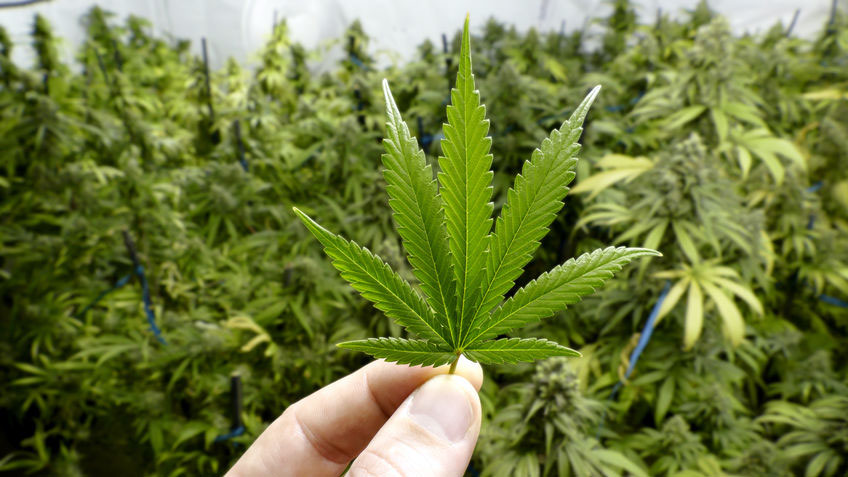Understanding Cannabis: A Comprehensive Guide
Cannabis has been a topic of interest and debate for centuries, attracting attention from various sectors including medicine, agriculture, and law. This versatile plant, known for its psychoactive properties, has carved a significant place in contemporary society. In this article, we will explore the many facets of cannabis, from its history and uses to its legal status and health implications.
What is Cannabis?
Cannabis is a flowering plant that belongs to the Cannabaceae family. The two most well-known species are Cannabis sativa and Cannabis indica, each possessing unique characteristics and effects. The plant is primarily recognized for its psychoactive compound, delta-9-tetrahydrocannabinol (THC), which produces the “high” associated with marijuana use. However, cannabis also contains other beneficial compounds, including cannabidiol (CBD), which has gained popularity for its therapeutic potential without the psychoactive effects.
Historical Context of Cannabis
The history of cannabis is as rich and varied as its applications. This plant has been cultivated for thousands of years, initially used for its fibers, seeds, and medicinal properties.
Ancient Uses
- Textiles and Fiber: Cannabis was one of the first plants to be cultivated for its fibers, making it an essential resource in ancient civilizations. The fibers were used to create durable textiles, ropes, and paper.
- Medicinal Uses: Historical texts reveal that ancient cultures, including the Egyptians and Chinese, used cannabis for medicinal purposes. In China, it was prescribed for ailments such as pain and inflammation as early as 2737 BCE.
- Spiritual and Ritualistic Practices: Many ancient cultures incorporated cannabis into their spiritual practices. In India, for example, it has been used in religious ceremonies and as a sacrament.
Cannabis in Modern Times
In the 20th century, attitudes towards cannabis began to shift dramatically. In the early 1900s, cannabis was a common ingredient in many medicines, but the plant faced growing stigma, leading to its criminalization in various countries. The Marihuana Tax Act of 1937 in the United States marked a turning point, leading to a ban on its use and cultivation.
The War on Drugs
The late 20th century saw the intensification of anti-drug policies, including strict regulations against cannabis. The War on Drugs disproportionately affected marginalized communities, resulting in significant legal and social consequences for cannabis use and possession.
The Cannabis Legalization Movement
In recent decades, however, the narrative surrounding cannabis has begun to change. Activists have fought for legalization based on medical benefits, social justice, and economic opportunities. Several U.S. states and countries around the world have now legalized cannabis for recreational and medicinal use, leading to a burgeoning cannabis industry.
The Cannabis Plant: Types and Characteristics
Cannabis plants can be classified into three main types: Cannabis sativa, Cannabis indica, and Cannabis ruderalis. Each type has distinct characteristics and uses.
1. Cannabis Sativa
- Appearance: Sativa plants are tall and slender, with narrow leaves and a lighter green color.
- Effects: Generally associated with uplifting and energetic effects, making it popular for daytime use. Users often report enhanced creativity and sociability.
- Uses: Sativa strains are often used to treat depression, fatigue, and attention disorders.
2. Cannabis Indica
- Appearance: Indica plants are shorter and bushier, with broader leaves and darker green hues.
- Effects: Known for its calming and sedative effects, Indica is often recommended for nighttime use. It may help with anxiety, insomnia, and chronic pain.
- Uses: Indica strains are favored for their ability to promote relaxation and alleviate muscle tension.
3. Cannabis Ruderalis
- Appearance: Ruderalis plants are smaller and have fewer psychoactive properties.
- Effects: Typically low in THC, Ruderalis is often used in hybrid strains to provide unique growth characteristics.
- Uses: Often bred with Sativa and Indica strains for cultivation purposes.
How Cannabis Works: The Endocannabinoid System
The effects of cannabis are primarily attributed to its interaction with the endocannabinoid system (ECS) in the human body. This complex system plays a crucial role in regulating various physiological processes, including mood, pain sensation, appetite, and memory.
Components of the Endocannabinoid System
- Endocannabinoids: Naturally occurring compounds in the body that bind to cannabinoid receptors, mimicking the effects of cannabis.
- Cannabinoid Receptors: Two main types—CB1 and CB2—are found throughout the body. CB1 receptors are mainly located in the brain and central nervous system, while CB2 receptors are primarily found in the immune system and peripheral organs.
- Enzymes: Responsible for breaking down endocannabinoids once they have fulfilled their function.
How Cannabis Affects the Body
When cannabis is consumed, THC binds to CB1 receptors in the brain, producing the euphoric “high.” Conversely, CBD interacts more subtly with both CB1 and CB2 receptors, contributing to its therapeutic effects without the psychoactive properties.
The Therapeutic Benefits of Cannabis
Research has revealed numerous potential health benefits of cannabis, particularly its cannabinoids. Below are some of the most prominent therapeutic applications.
1. Pain Management
One of the most widely recognized uses of cannabis is for pain relief. Both THC and CBD have shown efficacy in managing chronic pain conditions, including arthritis, fibromyalgia, and multiple sclerosis.
2. Anxiety and Depression
Cannabis, particularly strains high in CBD, may help alleviate symptoms of anxiety and depression. Many users report feeling calmer and more relaxed after consuming cannabis, though individual responses can vary.
3. Sleep Disorders
Indica strains are often used to promote sleep and combat insomnia. THC can reduce sleep latency (the time it takes to fall asleep) and increase overall sleep duration.
4. Appetite Stimulation
Cannabis is well-known for its ability to stimulate appetite, often referred to as “the munchies.” This effect can be beneficial for individuals undergoing chemotherapy or those with eating disorders.
5. Neurological Disorders
Emerging research suggests that cannabinoids may have neuroprotective properties. Conditions such as epilepsy and Parkinson’s disease may benefit from cannabis use, particularly due to CBD’s anticonvulsant properties.
The Legal Landscape of Cannabis
The legality of cannabis varies significantly around the world, with some countries fully legalizing it for recreational and medicinal use, while others maintain strict prohibitions.
1. Legalization Trends in the United States
In the United States, the cannabis landscape has evolved rapidly. As of 2024, numerous states have legalized cannabis for recreational use, while many more permit its use for medicinal purposes. However, cannabis remains illegal at the federal level, leading to ongoing tensions and complications for users and businesses.
2. Global Legalization Movements
Countries such as Canada, Uruguay, and several European nations have embraced cannabis legalization. This movement is driven by a combination of factors, including the potential for tax revenue, reducing incarceration rates for non-violent drug offenses, and acknowledging the plant’s medicinal benefits.
3. Challenges and Considerations
Despite progress, challenges remain in the cannabis legalization movement, including regulatory hurdles, stigma, and concerns about public health and safety. The evolving legal status of cannabis calls for ongoing dialogue and research.
Social Implications of Cannabis Use
The social implications of cannabis use are complex and multifaceted. From its role in social gatherings to its impact on public health, cannabis has far-reaching effects on society.
1. Stigma and Misconceptions
Despite increasing acceptance, cannabis still faces stigma rooted in decades of misinformation. Misconceptions about its effects, potential for addiction, and associations with criminal behavior continue to persist.
2. Cannabis and Community
Cannabis culture has developed its own communities, fostering social connections and networks. Events like cannabis festivals and expos celebrate the plant and its many uses, promoting education and awareness.
3. Economic Opportunities
The legalization of cannabis has created new economic opportunities, generating jobs in cultivation, distribution, and retail. The cannabis industry is projected to grow significantly, contributing to local economies and tax revenues.
Risks and Side Effects of Cannabis
While cannabis has many potential benefits, it is essential to recognize the risks and side effects associated with its use.
1. Impaired Cognitive Function
Short-term cannabis use can impair cognitive function, affecting memory, attention, and decision-making. These effects are particularly pronounced in inexperienced users or those consuming high-THC strains.
2. Mental Health Concerns
Some individuals may experience heightened anxiety or paranoia after consuming cannabis, especially with high-THC strains. Long-term use has also been associated with an increased risk of developing mental health disorders, particularly in adolescents.
3. Dependency and Withdrawal
While many users consume cannabis without developing dependency, some may experience withdrawal symptoms upon cessation. Symptoms can include irritability, insomnia, and changes in appetite.
Conclusion
Cannabis is a multifaceted plant with a rich history and diverse range of uses. As societal attitudes continue to evolve, cannabis has found its place in medicine, recreation, and industry. While the benefits of cannabis are becoming more widely recognized, it is crucial to approach its use with caution and awareness of potential risks.
The journey of cannabis, from ancient medicinal herb to modern-day legal commodity, reflects changing cultural perceptions and the ongoing quest for understanding its full potential. As research continues and regulations adapt, the story of cannabis will undoubtedly unfold further, paving the way for new discoveries and discussions in the years to come.

